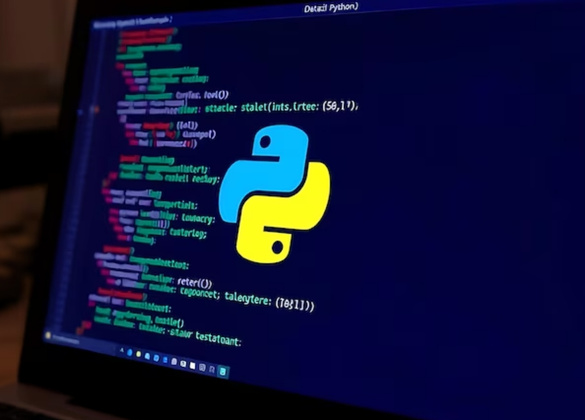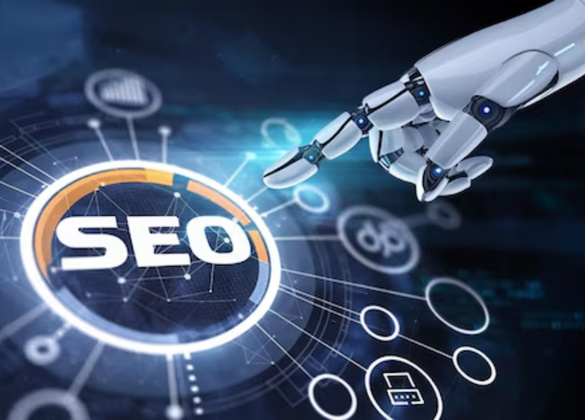How to Build AI-Powered SEO Workflows with Screaming Frog & Python
Recently updated: October 3rd, 2025
Technical SEO is no longer just about fixing broken links or chasing keyword density. The real advantage today comes from automation, especially when you pair the crawling power of Screaming Frog with the flexibility of Python and the intelligence of AI tools like OpenAI.
If you’ve ever thought: “There has to be a smarter way to run these audits at scale…”…you’re right. And you’re not alone. This isn’t just about saving time. It’s about building an SEO pipeline that thinks, adapts, and executes, like an engineer, not a checklist.
An AI-powered SEO workflow lets you go from “crawl” to “actionable insight” in minutes. Not days. Not weeks. And in this guide, we’ll show you how to build it. Whether you’re a solo technical SEO, part of a lean in-house team, or running a consulting operation for enterprise clients, this guide is your blueprint for SEO automation done the right way.
Key Takeaways
If you want to future-proof your SEO ops and embrace true technical scale, remember:
- Don’t just run audits; automate them.
- Use Screaming Frog’s CLI and API modes to integrate with Python.
- Layer in AI tools like OpenAI to interpret, summarize, and prioritize fixes.
- Turn crawl data into real-time, human-readable reports without touching Excel.
- Build a system, not a script.
If you’re ready to scale your SEO strategy with AI, automation, and code, this guide is for you.
Why Automate SEO Workflows? Benefits & Use Cases
 Most SEO professionals spend their time doing the same repetitive tasks – crawl, export, filter, fix, report, repeat. While that works for small sites and one-off audits, it breaks fast at scale.
Most SEO professionals spend their time doing the same repetitive tasks – crawl, export, filter, fix, report, repeat. While that works for small sites and one-off audits, it breaks fast at scale.
That’s where automation comes in.
When you combine Screaming Frog, Python, and AI, you’re not just speeding up tasks. You’re building a repeatable, reliable system that:
- Audits sites on autopilot
- Flags issues before they become costly
- Summarizes findings in plain English
- Powers smarter decisions, faster
Here’s why automation isn’t just a time-saver; it’s a strategic advantage.
- Save Time on High-Frequency SEO Checks
Manual crawling and exporting might work for a few pages. But what if you’re auditing a 50,000-URL ecommerce site? Or running weekly checks on 25 client websites?
With Python and Screaming Frog CLI, you can:
- Schedule crawls (daily, weekly, monthly)
- Export data in structured formats
- Process issues automatically (e.g., 404s, redirects, missing meta tags)
Your time is better spent fixing, not finding problems.
- Increase Accuracy and Consistency
Humans make mistakes. Especially when dealing with multiple tools, tabs, and spreadsheets. Automated workflows eliminate this friction.
- No more missed tags
- No forgotten parameters
- No “oops, I filtered the wrong column” moments
Every crawl is processed the same way. Every. Single. Time.
- Get Real-Time Insights, Not Just Data Dumps
Data is everywhere. Insights are not.
With AI integration (like OpenAI’s GPT via Python), your workflow can go beyond flags and into interpretation:
- “This page has duplicate titles” becomes “15% of your blog pages reuse the same title. Fix these 3 first based on traffic volume.”
- “Meta descriptions missing” becomes “Here are AI-generated descriptions based on on-page context.”
Now your SEO workflow is not just automated. It’s intelligent.
- Run Deeper Audits Without Extra Headcount
Technical audits that used to take a full team can now be systematized in code.
- Want to cross-reference canonical tags with internal linking logic?
- Want to compare header hierarchy across templates?
- Want to measure content uniqueness at scale?
All of that is possible with Screaming Frog data + Python scripting.
- Use Cases You Can Automate Today
Let’s make this real. Here are a few high-impact automations:
- Weekly SEO Health Check – Crawl, export, flag errors, email team
- AI-Powered Meta Review – Generate or grade title/meta descriptions
- Internal Link Analysis – Find orphaned pages or optimize link depth
- Content Gap Detector – Compare published content vs. entity coverage
- CMS Monitoring Bot – Crawl staging sites before go-live to flag SEO issues
Whether you’re handling technical SEO for a single site or managing dozens of domains, automation lets you scale quality, not just quantity.
Overview of Tools: Screaming Frog, Python, and AI APIs
To build a truly AI-powered SEO workflow, you need the right toolkit.
This isn’t about picking random apps or plugins. It’s about integrating three powerful components, each with a specific role in your automation stack:
- Screaming Frog – the crawler
- Python – the glue and logic
- AI APIs – the brain
Let’s break down what each does, and why together, they form a scalable and intelligent SEO engine.
Screaming Frog SEO Spider
Screaming Frog is the go-to tool for crawling websites like a search engine. But most people stop at the GUI (Graphical User Interface). What many don’t realize: Screaming Frog has advanced automation capabilities built in.
Key features for automation:
- CLI mode (Command Line Interface): Run crawls without opening the app
- Config files: Pre-set crawl rules, filters, user agents, and exports
- Custom extraction: Pull out structured content like headings, schema, etc.
- Integration-ready outputs: Exports in CSV, XLSX, or JSON for downstream processing
With CLI and a proper config, you can crawl any site on schedule and output exactly what you need.
Screaming Frog Python API Integration
 While Screaming Frog doesn’t have a native Python SDK, Python can interact with it in smart ways:
While Screaming Frog doesn’t have a native Python SDK, Python can interact with it in smart ways:
- Trigger crawls using subprocess or OS commands
- Pass arguments like crawl depth, URLs, output folders
- Parse results using pandas or csv modules
- Chain crawls with other steps like content scoring, reporting, or alerts
This allows Python to act as the orchestrator, turning Screaming Frog from a manual tool into an automated SEO machine.
Sample CLI crawl trigger via Python:
import subprocess
subprocess.run([
“ScreamingFrogSEOSpiderCli.exe”,
“–crawl”, “https://example.com”,
“–config”, “config.seospider”,
“–output-folder”, “crawl_results/”
])
Once exported, Python takes over to read, analyze, and report.
Python Libraries for SEO Automation
Here are the essential libraries you’ll use:
| Purpose | Library | Example Use |
| Data handling | pandas | Filter all pages with missing meta descriptions |
| Web requests | requests | Connect to APIs, download sitemaps |
| Parsing HTML | BeautifulSoup / lxml | Scrape custom elements from pages |
| Reporting | matplotlib, plotly, streamlit | Visual dashboards or shareable web apps |
| AI & NLP | openai, transformers, cohere | Generate summaries, fix meta tags, classify content |
| Scheduling | schedule, cron | Run workflows on autopilot |
Python turns static SEO data into dynamic SEO workflows.
AI APIs for SEO Use Cases
Once you have your crawl data, AI steps in.
Whether it’s OpenAI’s GPT, Claude, Google NLP, or Cohere, you can use AI to:
- Summarize crawl issues in plain English
- Grade existing meta tags based on quality
- Suggest optimizations using page content
- Cluster keywords or content into topical themes
- Evaluate tone, structure, and semantic relevance
Prompt examples:
prompt = f”Review the following title tag for SEO clarity and clickability:\n'{title_tag}’\n\nRespond with a score from 1-10 and suggested improvements.”
AI makes the workflow smarter, not just faster. Together, these three tools, Screaming Frog, Python, and AI APIs, let you build a scalable, intelligent, and repeatable SEO system that improves with every run.
Setting Up Your SEO Automation Environment
Before we dive into building AI-powered SEO workflows, let’s get the foundation right.
Just like you wouldn’t deploy code without a dev environment, you shouldn’t build SEO automation without a clean setup for your tools. That means:
- Configuring Screaming Frog for headless automation
- Creating a Python environment for data parsing and AI integration
- Structuring your folders and scripts for easy updates and scaling
This section will walk you through setting up your AI-powered SEO workflows lab from scratch.
Install and Configure Screaming Frog for Automation
Start by downloading the Screaming Frog SEO Spider (free or licensed version). Automation requires CLI access, which is available in both tiers, though the paid version removes crawl limits.
Once installed:
- Locate the CLI binary
- On Windows: ScreamingFrogSEOSpiderCli.exe
- On macOS/Linux: ./ScreamingFrogSEOSpiderCli
- Create a crawl config
Open the GUI → set your preferred settings (user-agent, limits, custom extraction, etc.) → save it as .seospiderconfig. - Test a basic CLI crawl
Open Terminal or Command Prompt and run:
ScreamingFrogSEOSpiderCli –crawl https://example.com –config myconfig.seospiderconfig –output-folder ./exports
- Export results automatically
You can define export types (e.g., Internal, Response Codes, Meta Description) and configure them within the GUI before saving the config file.
Now you’ve got a repeatable crawl setup ready for scripting.
Setting Up Python for SEO Tasks
 Python is the language of SEO automation. Let’s prep your workspace.
Python is the language of SEO automation. Let’s prep your workspace.
- Create a virtual environment (recommended)
python -m venv seoenv
source seoenv/bin/activate # macOS/Linux
seoenv\Scripts\activate # Windows
- Install required libraries
pip install pandas openai requests beautifulsoup4 lxml schedule
- Set up a project directory
seo-workflow/
├── crawl_configs/
├── exports/
├── scripts/
├── prompts/
└── reports/
- Store API keys securely
Use a .env file or OS environment variables for storing sensitive credentials like your OpenAI API key.
Example using os.getenv():
import os
openai.api_key = os.getenv(“OPENAI_API_KEY”)
Now your system is prepped for crawling, scripting, and AI integration.
Connecting Screaming Frog with Python
Python and Screaming Frog don’t connect through an API directly, but CLI commands give us all the power we need.
Use Python’s subprocess module to trigger crawls:
import subprocess
def run_crawl(domain):
subprocess.run([
“ScreamingFrogSEOSpiderCli”,
“–crawl”, domain,
“–config”, “crawl_configs/base.seospiderconfig”,
“–output-folder”, “exports/”
])
After the crawl:
- Use pandas.read_csv() to load the export files
- Analyze issues, summarize with AI, or visualize data
Think of Python as your conductor to initiating crawls, parsing exports, querying AI, and generating reports.
With this environment in place, you’re ready to automate. No more “open Screaming Frog, click Export, open Excel…” every time you run an audit.
Building AI-Powered SEO Workflows Step-by-Step
Now that your environment is ready, it’s time to connect the dots, from crawling to insights to action. This is where automation meets intelligence. Each step in the workflow will handle a specific function: crawling, cleaning, interpreting, and reporting. The goal is to build a modular system you can run on-demand or schedule like clockwork.
Let’s break it down.
Step 1 – Automate Crawling with Screaming Frog
 Start with your base operation: site crawling.
Start with your base operation: site crawling.
Your Python script should handle:
- Domain input
- Crawl initiation via CLI
- Exporting relevant reports to a defined folder
- Optional logging of crawl status
Example:
def crawl_site(domain):
subprocess.run([
“ScreamingFrogSEOSpiderCli”,
“–crawl”, domain,
“–config”, “crawl_configs/audit_config.seospiderconfig”,
“–output-folder”, f”exports/{domain.replace(‘.’, ‘_’)}/”
])
Bonus: Use Python’s schedule module to run this daily, weekly, or after deployments.
import schedule
import time
schedule.every().monday.at(“07:00″).do(crawl_site, domain=”example.com”)
while True:
schedule.run_pending()
time.sleep(60)
Step 2 – Clean and Normalize Crawl Data
Once you have your CSV files, import them into pandas for cleaning.
Typical files to process:
- internal_all.csv
- response_codes.csv
- meta_description.csv
- canonical.csv
Use pandas to filter and format:
import pandas as pd
df = pd.read_csv(‘exports/example_com/internal_all.csv’)
missing_titles = df[df[‘Title 1’].isnull()]
long_descriptions = df[df[‘Meta Description 1’].str.len() > 160]
You can also normalize URLs, handle encoding issues, and merge multiple exports into one unified dataframe for AI processing.
Step 3 – Apply AI for Content & SEO Analysis
 This is where things get smart.
This is where things get smart.
Use OpenAI’s GPT (or any AI API) to analyze crawl data and generate insights.
Use Cases:
- Grade meta descriptions
- Rewrite title tags
- Identify thin content
- Summarize SEO issues in client-friendly language
Example prompt:
prompt = f”””
The following meta description exceeds 160 characters:
“{description}”
Rewrite it to be under 155 characters, SEO-friendly, and compelling.
“””
You can loop through your dataframe and apply AI logic:
import openai
def optimize_description(desc):
response = openai.ChatCompletion.create(
model=”gpt-4″,
messages=[{“role”: “user”, “content”: prompt}]
)
return response[‘choices’][0][‘message’][‘content’]
Now you’re not just finding issues; you’re fixing them at scale.
Step 4 – Generate Automated SEO Reports
You’ve crawled, cleaned, and analyzed. Now turn that into a report your team or client can actually use.
Options:
- Export CSVs or Excel files with AI suggestions
- Build HTML dashboards using streamlit or dash
- Visualize issues using plotly or matplotlib
- Email or Slack summaries using APIs
For example, generate a quick HTML dashboard with streamlit:
streamlit run scripts/report_dashboard.py
Or automate email delivery:
import smtplib
from email.mime.text import MIMEText
msg = MIMEText(“SEO audit complete. View results here: [link]”)
msg[“Subject”] = “Weekly SEO Audit”
msg[“From”] = “seo@yourdomain.com”
msg[“To”] = “team@yourdomain.com”
server = smtplib.SMTP(“smtp.yourdomain.com”, 587)
server.login(“user”, “pass”)
server.send_message(msg)
server.quit()
Step 5 – Trigger Actions Based on AI Insights
This is where the AI-powered SEO workflow comes full circle.
You can now push next steps automatically:
- Add prioritized fixes to Jira/Trello
- Notify devs via Slack
- Update internal dashboards or CMS
- Trigger follow-up audits on staging sites
Example: Send top 5 broken links to a Trello board using their API.
Automation doesn’t stop at reports. It guides action.
Now you’ve built a living, breathing AI-powered SEO workflows, one that audits, thinks, and recommends. And all of it happens on autopilot.
Real-World Use Cases and Sample Workflows
You’ve got the toolkit. You’ve built the workflow. Now, let’s make it real.
Here are practical, high-leverage use cases where AI-powered SEO workflows powered by Screaming Frog, Python, and AI that can give you a serious edge. These are based on real-world challenges technical SEOs face every week. Each one is fully automatable, scalable, and repeatable.
Use Case 1 – AI-Based Meta Tag Optimization
 The problem: Hundreds of pages have missing or weak meta descriptions. Writing them manually is time-consuming and inconsistent.
The problem: Hundreds of pages have missing or weak meta descriptions. Writing them manually is time-consuming and inconsistent.
Workflow:
- Use Screaming Frog to crawl for missing or duplicate meta tags
- Export meta data
- Use Python to detect gaps or overly long descriptions
- Pass flagged entries to OpenAI or Claude for rewrite suggestions
- Update CMS via API or export for manual upload
Prompt example:
“Rewrite the following meta description to be under 155 characters, SEO-optimized, and emotionally compelling for a user browsing [niche/topic].”
Result: A full sheet of AI-reviewed or generated meta tags – contextual, human-sounding, and ready to implement.
Use Case 2 – Technical Audit with Anomaly Detection
The problem: You want to monitor site health continuously and flag only unusual patterns.
Workflow:
- Schedule Screaming Frog crawls every 7 days
- Store past results in a historical database
- Use Python to compare changes in crawl depth, broken links, redirect chains, etc.
- Alert the team only when thresholds are exceeded
Example logic:
if new_404_count > baseline_404_count * 1.25:
trigger_alert(“Significant increase in broken pages!”)
Result: A smarter audit system that doesn’t flood your inbox but notifies you when it really matters.
Use Case 3 – Entity Gap Analysis via AI
The problem: Your content is ranking, but it’s not semantically aligned with the top-ranking competitors.
Workflow:
- Crawl top-performing pages from competitors (yes, Screaming Frog can do that)
- Extract content using custom extraction or HTML parsing
- Use an AI model to detect missing entities or topical gaps
- Generate suggestions for new internal links or content additions
Prompt example:
“Compare these two content pieces. What key topics or entities are discussed in one but missing in the other?”
Result: A prioritized list of content optimizations that go beyond keywords and into semantic relevance.
Use Case 4 – Orphan Page Detection + Actionable Follow-Ups
The problem: Pages exist but aren’t getting linked. You want to find and fix them.
Workflow:
- Crawl the site to get internal links
- Identify pages with zero inlinks
- Use AI to recommend appropriate internal anchor text and target pages
- Add links directly via CMS or provide instructions to content teams
Result: Orphan pages get linked, indexability improves, and equity flows where it should.
Use Case 5 – Pre-Launch SEO QA on Staging Sites
The problem: SEO issues often go live without being caught during development.
Workflow:
- Schedule automated crawls of staging sites
- Compare against baseline config (e.g., no-index tags, canonical structure, H1 usage)
- Run AI-based checklist comparison: “Does this page follow best practices for content structure and metadata?”
- Send a Slack alert with pass/fail summary before every release
Result: SEO is no longer a post-launch fix. It becomes part of your CI/CD pipeline.
Every one of these workflows can be built using tools you already have, just smarter, faster, and more scalable.
Best Practices for Scaling AI SEO Workflows
 Once you’ve built your first AI-powered SEO workflow, the next step is scale. But scaling isn’t just about doing more. It’s about doing things better with cleaner code, faster execution, and fewer breakdowns. That means applying engineering principles to SEO tasks.
Once you’ve built your first AI-powered SEO workflow, the next step is scale. But scaling isn’t just about doing more. It’s about doing things better with cleaner code, faster execution, and fewer breakdowns. That means applying engineering principles to SEO tasks.
If you want your workflows to run across multiple domains, teams, or markets without falling apart, these best practices are your blueprint.
- Use Version Control with Git
Treat your SEO scripts like software.
- Keep your code in Git repositories
- Track changes to prompts, logic, or dependencies
- Roll back safely if something breaks
- Collaborate without overwriting each other’s work
Bonus: You can even host your repo privately on GitHub and invite your SEO or dev team for co-maintenance.
- Modularize Your Workflow
Don’t build one giant script that tries to do everything. Instead, break it down into reusable, composable modules:
- crawl.py → handles Screaming Frog CLI triggers
- clean.py → normalizes and preps data
- analyze.py → applies AI or logic-based checks
- report.py → generates dashboards or summaries
- alerts.py → sends notifications to Slack/email
This makes updates painless and debugging easy.
- Handle API Limits Gracefully
When using AI APIs, you’ll inevitably run into rate limits or timeouts.
Here’s how to make sure your workflow doesn’t crash mid-process:
- Add retry logic with exponential backoff
- Use batching instead of one prompt per row
- Cache results locally to avoid repeated calls
- Monitor usage against your plan quota
Sample retry logic:
for attempt in range(3):
try:
result = call_openai_api(prompt)
break
except openai.error.RateLimitError:
time.sleep(2 ** attempt)
- Centralize Configs and Prompts
Hardcoding settings (like crawl depth or prompts) is a recipe for chaos.
Instead:
- Store Screaming Frog configs in a /configs folder
- Maintain a library of AI prompts as .txt files
- Allow your scripts to read configs dynamically
That way, you can test new prompt strategies or crawl rules without editing your core scripts.
- Build Logging and Error Tracking Early
If a crawl fails at 2 AM and no one sees it, did it really happen?
Use logging to track:
- Crawl success/failure
- API responses and errors
- Processing time per task
- Workflow status by domain or date
Bonus: Set up alerts via Slack, Discord, or email if something breaks.
This turns your automation into a monitored system not a black box.
- Make Reports Human-Readable, Not Just Machine-Readable
Technical data is great. But clients and stakeholders don’t want CSVs, they want clarity.
Use streamlit, plotly, or Google Sheets API to generate reports that:
- Summarize SEO health
- Highlight priority actions
- Include AI-generated suggestions in plain language
Pro tip: Include “what to fix” AND “why it matters.”
- Run Workflows on a Scheduler, Not Just Manually
You don’t need to sit around running audits.
Use:
- schedule in Python
- OS-level cron jobs
- Task managers like Airflow or GitHub Actions
Let your workflows run at 2 AM, email the results at 3 AM, and be waiting in your inbox when you start your day.
Done right, these best practices turn your AI-powered SEO workflows into SEO pipelines, repeatable, scalable, and resilient systems that do the work for you.
Common Pitfalls and How to Avoid Them
 Even the most well-intentioned automation efforts can go sideways if you don’t anticipate the risks. When working with AI, Python scripts, and crawl data, small oversights can snowball into false reports, broken dashboards or worse, missed SEO errors that go live.
Even the most well-intentioned automation efforts can go sideways if you don’t anticipate the risks. When working with AI, Python scripts, and crawl data, small oversights can snowball into false reports, broken dashboards or worse, missed SEO errors that go live.
Here are the most common mistakes teams make when building AI-powered SEO workflows and how to steer clear of them.
Mistake #1: Treating Screaming Frog as a One-Size-Fits-All Crawler
What happens: You use the same crawl config for every site regardless of structure, CMS, or page types.
Why it’s a problem:
- You might miss JavaScript-rendered pages
- Crawl depth could cut off important templates
- Custom rules (e.g., exclude filters, include blog) may not apply
Fix it:
Create site-specific or vertical-specific .seospiderconfig files. Audit them regularly and store them in a version-controlled configs/ folder.
Bonus tip: Run test crawls on staging before deploying full audits to production.
Mistake #2: Over-Relying on AI Without Human QA
What happens: AI rewrites all your meta tags or classifies content without review.
Why it’s a problem:
- GPT can hallucinate
- Language may sound robotic or off-brand
- AI may misinterpret page context
Fix it:
Add a human-in-the-loop layer:
- Review a sample of outputs manually
- Apply approval status to rows (Pending, Approved, Needs Fix)
- Train AI with better prompt instructions based on feedback
AI is your assistant, not your final authority.
Mistake #3: Skipping Logging and Failover Protection
What happens: Your script fails silently at Step 3 and you don’t notice for a week.
Why it’s a problem:
- You lose data
- You trust broken reports
- You waste time debugging from scratch
Fix it:
Use Python’s built-in logging module to track every step. Log file paths, errors, runtimes, and API status codes.
Also include:
- Try/except blocks around each major task
- Backup crawls in case of failures
- Email alerts when errors occur
This turns your scripts into monitored systems, not time bombs.
Mistake #4: Ignoring Rate Limits and Token Costs
What happens: You run a full crawl of 10,000 URLs through GPT… and hit your API quota by lunch.
Why it’s a problem:
- Costs escalate fast
- Scripts break without notice
- You get incomplete results
Fix it:
Use batching. Prioritize the most valuable pages (e.g., top 100 by traffic or revenue). Cache results where possible. Set thresholds for AI usage.
You don’t need to analyze everything; just the parts that move the needle.
Mistake #5: Output That’s Too Technical for Stakeholders
What happens: Your final output is a 12-tab Excel file with crawl data, regex, and AI responses in raw format.
Why it’s a problem:
- Non-technical teams won’t use it
- Action items get buried
- Your efforts go unnoticed
Fix it:
Design your reports with the end-user in mind:
- Use plain English summaries
- Highlight priority issues (e.g., red/yellow/green)
- Include recommendations, not just flags
Great automation doesn’t just analyze; it communicates clearly. By avoiding these pitfalls, you not only build smarter workflows, you also ensure they’re trusted, used, and maintained long-term.
Future Trends in AI-Powered SEO Automation
 AI-powered SEO is not a passing fad; it’s the foundation of the next decade of search strategy. What started with automating title tags and crawling websites is quickly evolving into full-stack systems that can audit, interpret, prioritize, and even take action across thousands of pages.
AI-powered SEO is not a passing fad; it’s the foundation of the next decade of search strategy. What started with automating title tags and crawling websites is quickly evolving into full-stack systems that can audit, interpret, prioritize, and even take action across thousands of pages.
Let’s explore where this is heading, so you can build for what’s next, not just what’s now.
- GPT-4o and Multimodal Auditing
OpenAI’s latest models (like GPT-4o) support multimodal inputs – text, code, images, and more.
What this means for SEO:
- AI can now “see” your web pages, not just read HTML
- Visual audits for UI/UX, layout, mobile experience, etc.
- Video and image optimization via intelligent feedback
Example: Upload a screenshot of a product page and ask GPT,
“Is this layout likely to confuse users? Suggest SEO and UX improvements.”
This merges technical SEO with design feedback in ways previously impossible.
- Semantic Search + Embedding-Based SEO
Search is becoming less about strings, more about meaning. Instead of matching keywords, AI search engines and chatbots use embeddings to understand conceptual intent. This shift will impact how we build and optimize content.
What’s coming:
- AI workflows that cluster content by topical themes
- Entity-level optimization rather than keyword density
- Content scoring based on semantic coverage, not just headers
Tools like openai.embeddings or cohere already let you build models that can evaluate your site the way LLMs do.
- Predictive SEO and Issue Forecasting
Current SEO audits are reactive as the react like: “here’s what’s broken.”
Future workflows will use AI to predict what’s likely to break next.
Imagine:
- AI models that detect structural issues before they cause traffic drops
- Forecasting tools that simulate how Google might evaluate your site post-update
- Proactive alerts: “Your internal linking depth is increasing. Thin pages may become orphaned soon.”
This changes SEO from being defensive to proactive.
- Real-Time SEO Monitoring Pipelines
With headless crawling, event-based scripting, and AI summarization, SEO can become continuous.
Instead of “monthly audits,” think:
- Real-time crawl triggers after content is published
- Instant AI feedback on page quality
- Dashboard updates every hour
Connected to Slack. Pushed to ClickUp. Synced with Google Data Studio.
SEO moves from a quarterly checklist to a live data stream.
- Auto-Implementation Workflows (with Safeguards)
Right now, AI suggests fixes. Soon, it will make them.
We’re already seeing CMS plugins that:
- Rewrite meta tags
- Adjust headers based on search trends
- Redirect outdated URLs automatically
The key: guardrails.
Human approval loops. Content sentiment checks. Change tracking. AI won’t replace SEOs, it’ll help them move faster, more accurately, and with less friction.
- Multi-Site SEO Ops from a Central Brain
Agencies and in-house teams managing portfolios of 10, 50, or 100 sites will shift to centralized AI pipelines.
Picture this:
- One orchestrator script
- One prompt library
- One report template
- Multiple domains, environments, and configs
Each running on a cron schedule. Each feeding into a central dashboard. Each using AI to prioritize effort. It’s not just automation; it’s SEO DevOps. The future of SEO isn’t a guessing game. It’s visible. It’s programmable. And it’s AI-first.
Conclusion
We’re entering a new era of SEO; one that’s less about manual audits and more about intelligent systems. When you combine the crawling power of Screaming Frog, the flexibility of Python, and the insight-generating capabilities of AI, you’re no longer just fixing issues. You’re building a machine that finds them, explains them, and helps resolve them at scale.
This isn’t about using AI as a novelty or scripting a few shortcuts. It’s about building a repeatable, modular, and scalable SEO workflow that works across domains, across teams, and across time.
It audits.
It interprets.
It prioritizes.
It adapts.
And the best part? Once set up, it keeps working, while you focus on the bigger picture. So, if you’ve been spending hours each week running crawls, cleaning exports, or manually updating reports… it’s time to step back and think like an engineer. Because the future of SEO isn’t just technical. It’s programmable.
Frequently Asked Questions
How do I connect Screaming Frog with Python for automation?
You can automate Screaming Frog via Python by using its Command Line Interface (CLI). Python’s subprocess module can trigger Screaming Frog crawls with specific configs and export paths. Once the crawl is complete, Python scripts can load the output CSVs and process them using libraries like pandas.
Can AI fully replace manual SEO audits?
Not entirely. AI can accelerate audits by identifying patterns, generating suggestions, and summarizing issues, but human oversight is essential. Use AI to scale your workflows and focus your attention, not to blindly implement changes.
What is the best Python library for SEO automation?
The most commonly used libraries include:
- pandas for data analysis
- requests for API and web data
- BeautifulSoup or lxml for parsing HTML
- openai or cohere for integrating AI capabilities
- schedule for running automated tasks
Together, they cover everything from crawling to reporting.
How do I handle large-scale crawls automatically?
For large sites:
- Use Screaming Frog’s CLI mode with preconfigured .seospiderconfig files
- Limit crawl depth and exclude unnecessary parameters
- Schedule crawls during low-traffic hours
- Store exports in date-stamped folders for historical comparison
- Use batching and caching when applying AI to reduce costs
How do I know if my AI suggestions are accurate?
Always validate AI output before publishing. Review a sample manually, check for hallucinations or incorrect suggestions, and test prompt variations. Add a “confidence” or “approval” column to your reports to indicate whether a human has signed off.
Can I run these workflows on staging environments before production?
Absolutely. In fact, it’s highly recommended. You can crawl your staging domains using Screaming Frog (as long as they’re not blocked in robots.txt) to catch SEO issues before they go live, like missing canonicals, noindex tags, or broken links.
How do I integrate AI-generated SEO fixes into my CMS?
Options include:
- Exporting AI suggestions as CSV for manual upload
- Using the CMS’s API (e.g., WordPress REST API) to automate content updates
- Building low-code workflows using tools like Zapier or Make
- Connecting AI output to CMS plugins (custom or third-party)
Start with semi-automation and layer in full integrations as your confidence grows.
What’s the best way to monitor the health of my AI-powered SEO system?
Set up logging, alerts, and dashboards:
- Log every crawl, export, and AI interaction
- Use Python to email error reports or send Slack alerts
- Track key metrics like crawl success rate, API usage, and audit completion
- Visualize performance over time using tools like Streamlit, Data Studio, or Grafana
Think of it as DevOps for SEO because stable systems produce reliable insights.
Latest posts by Vijaya Tyagi (see all)
AI Mentions Are the New Backlinks – Why They Matter - December 10, 2025
Local AI SEO: Get Picked for “Near Me” - November 26, 2025










